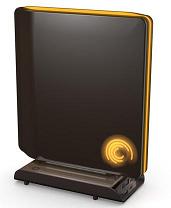|
External Hard Drives:
How To Carry Your Life With You (And Why You'd Want To)
Tradeoffs
No tech product comes without its drawbacks, and external hard drives are no different. Cost is a factor, as external drives generally cost more than their internal cousins. Speed can also be a factor, as USB2- and Firewire-based drives are nowhere near as fast as a modern SATA drive. ESATA was designed to correct this problem with external drives, but motherboards that support this connection type are uncommon, and drives that support it are rarer still—and even more expensive.
Reliability is an issue that is often overlooked with external hard drives. Internal hard drives are generally cooled by airflow within the chassis, but external drives have no such help. The cheapest drives have only passive cooling, which can cause a drive to overheat and malfunction when in use for extended periods. Others use small cooling fans to keep drive temperatures within bounds, but these can be excessively noisy, making them unbearable to be around for any length of time. Fans, too, offer an additional point of failure for the drive, though the better drives seek to minimize this through the use of optimized airflow design and high-quality parts.
One point that bears special mention is drop safety. Though the enclosures are often ruggedized for travel, external hard drives are still hard drives. Thus, dropping or bumping a drive while in use may cause problems, ranging from a momentary hiccup to (if you're really unlucky) a head crash. Since these drives are external to the PC chassis, care must be taken to put them where they won't be bumped, jostled, or knocked off a table.
Conclusion
External hard drives, as you can see, have many more uses than just giving Grandma a place to store her vacation photos. Whether used to shuttle files from one location to another, or to provide backups of important data, external hard drives are one more tool in the smart geek's arsenal for making computing faster, easier, and less stressful.
REAL TIME PRICING





